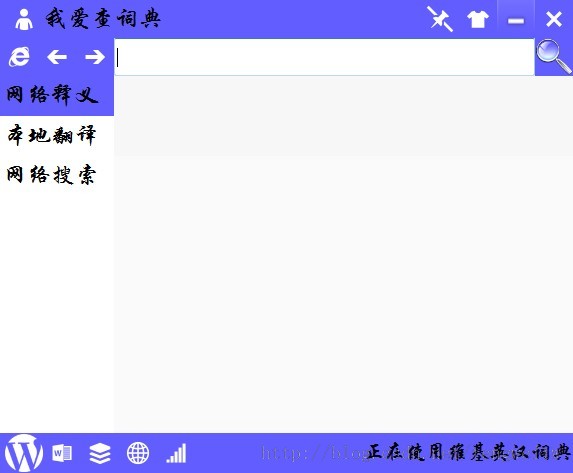гҖҗQtзј–зЁӢгҖ‘еҹәдәҺQtзҡ„иҜҚе…ёејҖеҸ‘зі»еҲ—--ж— иҫ№жЎҶзӘ—еҸЈзҡ„зј©ж”ҫдёҺжӢ–еҠЁ
еңЁзҺ°еңЁпјҢз»қеӨ§еӨҡж•°иҪҜ件йғҪеҗ‘зқҖз®ҖжҙҒпјҢж—¶е°ҡеҸ‘еұ•гҖӮе°ұжӢҝжңүйҒ“зҡ„еҚ•иҜҚжң¬е’ҢжҲ‘еҒҡзҡ„еҚ•иҜҚжң¬жқҘиҜҙпјҢз»қеӨ§еӨҡж•°з”ЁжҲ·иӮҜе®ҡе–ңж¬ўжҲ‘жүҖеҒҡзҡ„еҚ•иҜҚжң¬(е°ұеҚ•еҚ•з•ҢйқўпјҢе…ідәҺйўңиүІжҗӯй…Қе’ҢеёғеұҖй—®йўҳпјҢеӨ§е®¶е°ұдёҚиҰҒеңЁж„ҸдәҶ)гҖӮ
жңүйҒ“зҡ„еҚ•иҜҚжң¬пјҡ
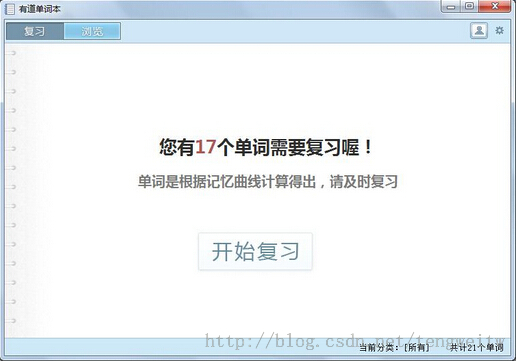
жҲ‘жүҖеҒҡзҡ„еҚ•иҜҚжң¬пјҡ
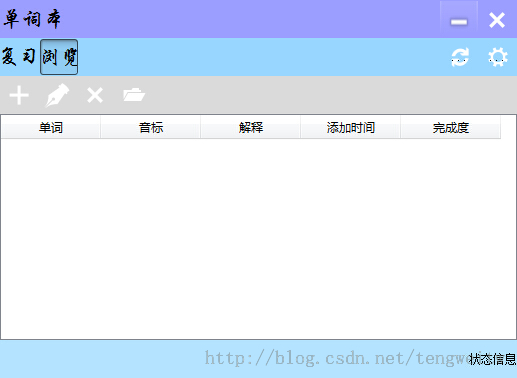
еҫҲжҳҺжҳҫпјҢдёӨиҖ…зҡ„дё»иҰҒеҢәеҲ«е°ұжҳҜе‘Ёеӣҙзҡ„иҫ№жЎҶй—®йўҳгҖӮдҪ еҸҜд»ҘеҜ№жҜ”QQд»ҘеүҚзҡ„зүҲжң¬е’ҢиҝҷеҮ е№ҙзҡ„зүҲжң¬пјҢе°ұдјҡеҸ‘зҺ°йғҪеҖҫеҗ‘дәҺдёӢйқўиҝҷз§ҚзӘ—еҸЈжЁЎејҸгҖӮдёӢйқўжҲ‘们е°ұиҜҙиҜҙеҰӮдҪ•з”ЁQtе®һзҺ°ж— иҫ№жЎҶзӘ—еҸЈзҡ„зј©ж”ҫдёҺжӢ–еҠЁгҖӮ
еҜ№дәҺж— иҫ№жЎҶзӘ—еҸЈзҡ„жӢ–еҠЁе…¶е®һеҫҲз®ҖеҚ•пјҢе…¶еҹәжң¬жҖқжғіжҳҜпјҢеңЁйј ж Ү移еҠЁеүҚеҗҺи®°еҪ•йј ж Үзҡ„еқҗж ҮпјҢ然еҗҺе°ҶзӘ—еҸЈз§»еҠЁиҝҷдёӨдёӘеқҗж Үд№Ӣе·®зҡ„и·қзҰ»еҚіеҸҜпјҢе…·дҪ“е®һзҺ°еҸҜд»ҘзңӢд»Јз ҒпјҢе°ұйқһеёёжё…жҘҡдәҶгҖӮдёӢйқўдё»иҰҒи®Іи®ІеҰӮдҪ•е®һзҺ°йј ж Үж”№еҸҳзӘ—еҸЈзҡ„еӨ§е°ҸпјҢйҰ–е…ҲпјҢжҲ‘们е°ҶдёҖдёӘзӘ—еҸЈеҲҶдёәд»ҘдёӢ9дёӘеҢәеҹҹпјҢе…¶дёӯеҸӘжңүйј ж ҮеңЁ22еҢәеҹҹж—¶ж— жі•ж”№еҸҳе…¶еҪўзҠ¶пјҢдёҚиғҪж”№еҸҳзӘ—еҸЈеӨ§е°ҸгҖӮеҪ“йј ж ҮеңЁе…¶е®ғеҢәеҹҹж—¶пјҢйј ж Үж”№еҸҳеҪўзҠ¶е№¶еҸҜд»Ҙж”№еҸҳзӘ—еҸЈеӨ§е°ҸгҖӮзӘ—еҸЈеҢәеҹҹеҲҶзұ»еҰӮдёӢеӣҫпјҡ
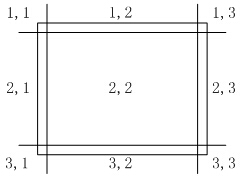
е…·дҪ“е®һзҺ°еҰӮдёӢд»Јз Ғ(widget.uiжңӘеҒҡд»»дҪ•ж”№еҸҳ)пјҡ
1гҖҒwidget.hж–Ү件
#ifndef WIDGET_H
#define WIDGET_H
#include <QWidget>
#define MARGIN 20//еӣӣдёӘи§’зҡ„й•ҝеәҰ
namespace Ui {
class Widget;
}
class Widget : public QWidget
{
Q_OBJECT
public:
explicit Widget(QWidget *parent = 0);
~Widget();
int countFlag(QPoint p, int row);
void setCursorType(int flag);
int countRow(QPoint p);
protected:
void mousePressEvent(QMouseEvent *event);
void mouseReleaseEvent(QMouseEvent *event);
void mouseDoubleClickEvent(QMouseEvent *event);
void mouseMoveEvent(QMouseEvent *event);
private:
Ui::Widget *ui;
bool isLeftPressed;
int curPos;
QPoint pLast;
};
#endif // WIDGET_H
2гҖҒwidget.cppж–Ү件
#include "widget.h"
#include "ui_widget.h"
#include<QMouseEvent>
#include<QDebug>
Widget::Widget(QWidget *parent) :
QWidget(parent),
ui(new Ui::Widget)
{
ui->setupUi(this);
this->setMouseTracking(true);
//и®ҫзҪ®еңЁдёҚжҢүйј ж Үзҡ„жғ…еҶөдёӢд№ҹи§ҰеҸ‘йј ж Ү移еҠЁдәӢ件пјҢжіЁж„ҸQMainWindowзҡ„жғ…еҶө:centralWidget()->setMouseTracking(true);
isLeftPressed=false;
curPos=0;//ж Үи®°йј ж Үе·ҰеҮ»ж—¶зҡ„дҪҚзҪ®
this->setMinimumSize(400,300);//и®ҫзҪ®жңҖе°Ҹе°әеҜё
QCursor cursor;
cursor.setShape(Qt::ArrowCursor);//и®ҫзҪ®йј ж Үдёәз®ӯеӨҙеҪўзҠ¶
// ui->pushButton->setCursor(cursor);//еҪ“ж”ҫеңЁжҢүй’®дёҠж—¶пјҢдёәз®ӯеӨҙ
// cursor.setShape(Qt::OpenHandCursor);
QWidget::setCursor(cursor);//еҪ“ж”ҫеңЁдё»зӘ—еҸЈдёҠж—¶пјҢдёәжүӢеҪў
qDebug()<<"h="<<this->height();
setWindowFlags(Qt::FramelessWindowHint);//и®ҫзҪ®дё»зӘ—еҸЈж— иҫ№жЎҶ
qDebug()<<this->minimumHeight();
}
Widget::~Widget()
{
delete ui;
}
void Widget::mousePressEvent(QMouseEvent *event)//йј ж ҮжҢүдёӢдәӢ件
{
if(event->button()==Qt::LeftButton)
{
this->isLeftPressed=true;
QPoint temp=event->globalPos();
pLast=temp;
curPos=countFlag(event->pos(),countRow(event->pos()));
event->ignore();
}
}
void Widget::mouseReleaseEvent(QMouseEvent *event)//йј ж ҮйҮҠж”ҫдәӢ件
{
if(isLeftPressed)
isLeftPressed=false;
QApplication::restoreOverrideCursor();//жҒўеӨҚйј ж ҮжҢҮй’ҲжҖ§зҠ¶
event->ignore();
}
void Widget::mouseDoubleClickEvent(QMouseEvent *event)//йј ж ҮеҸҢеҮ» е…ЁеұҸ
{
if(event->button()==Qt::LeftButton)
{
if(windowState()!=Qt::WindowFullScreen)
setWindowState(Qt::WindowFullScreen);
else setWindowState(Qt::WindowNoState);//жҒўеӨҚжӯЈеёёжЁЎејҸ
}
event->ignore();
}
void Widget::mouseMoveEvent(QMouseEvent *event)//йј ж Ү移еҠЁдәӢ件
{
int poss=countFlag(event->pos(),countRow(event->pos()));
setCursorType(poss);
if(isLeftPressed)//жҳҜеҗҰе·ҰеҮ»
{
QPoint ptemp=event->globalPos();
ptemp=ptemp-pLast;
if(curPos==22)//移еҠЁзӘ—еҸЈ
{
ptemp=ptemp+pos();
move(ptemp);
}
else
{
QRect wid=geometry();
switch(curPos)//ж”№еҸҳзӘ—еҸЈзҡ„еӨ§е°Ҹ
{
case 11:wid.setTopLeft(wid.topLeft()+ptemp);break;//е·ҰдёҠи§’
case 13:wid.setTopRight(wid.topRight()+ptemp);break;//еҸідёҠи§’
case 31:wid.setBottomLeft(wid.bottomLeft()+ptemp);break;//е·ҰдёӢи§’
case 33:wid.setBottomRight(wid.bottomRight()+ptemp);break;//еҸідёӢи§’
case 12:wid.setTop(wid.top()+ptemp.y());break;//дёӯдёҠи§’
case 21:wid.setLeft(wid.left()+ptemp.x());break;//дёӯе·Ұи§’
case 23:wid.setRight(wid.right()+ptemp.x());break;//дёӯеҸіи§’
case 32:wid.setBottom(wid.bottom()+ptemp.y());break;//дёӯдёӢи§’
}
setGeometry(wid);
}
pLast=event->globalPos();//жӣҙж–°дҪҚзҪ®
}
event->ignore();
}
int Widget::countFlag(QPoint p,int row)//и®Ўз®—йј ж ҮеңЁе“ӘдёҖеҲ—е’Ңе“ӘдёҖиЎҢ
{
if(p.y()<MARGIN)
return 10+row;
else if(p.y()>this->height()-MARGIN)
return 30+row;
else
return 20+row;
}
void Widget::setCursorType(int flag)//ж №жҚ®йј ж ҮжүҖеңЁдҪҚзҪ®ж”№еҸҳйј ж ҮжҢҮй’ҲеҪўзҠ¶
{
Qt::CursorShape cursor;
switch(flag)
{
case 11:
case 33:
cursor=Qt::SizeFDiagCursor;break;
case 13:
case 31:
cursor=Qt::SizeBDiagCursor;break;
case 21:
case 23:
cursor=Qt::SizeHorCursor;break;
case 12:
case 32:
cursor=Qt::SizeVerCursor;break;
case 22:
cursor=Qt::OpenHandCursor;break;
default:
// QApplication::restoreOverrideCursor();//жҒўеӨҚйј ж ҮжҢҮй’ҲжҖ§зҠ¶
break;
}
setCursor(cursor);
}
int Widget::countRow(QPoint p)//и®Ўз®—еңЁе“ӘдёҖеҲ—
{
return (p.x()<MARGIN)?1:(p.x()>(this->width()-MARGIN)?3:2);
}
3гҖҒmain.cppж–Ү件
#include<QtWidgets>
#include "widget.h"
int main(int argc, char *argv[])
{
QApplication a(argc, argv);
Widget w;
w.show();
return a.exec();
}
зЁӢеәҸиҝҗиЎҢжҲӘеӣҫеҰӮдёӢпјҡ
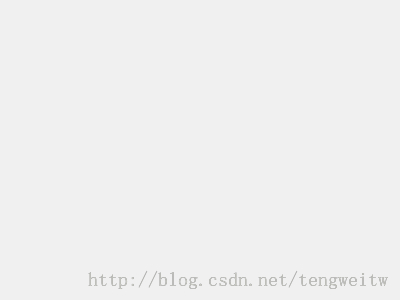
В В В В еҪ“дҪ е°Ҷйј ж Үж”ҫеңЁзӘ—еҸЈзҡ„иҫ№зјҳж—¶пјҢйј ж ҮдјҡеҸҳеҢ–еҪўзҠ¶пјҢиЎЁзӨәеҸҜд»ҘжӢ–еҠЁзӘ—еҸЈгҖӮз”ұдәҺжІЎжңүе…ій—ӯзӘ—еҸЈпјҢеҸӘиғҪеңЁејәеҲ¶е…ій—ӯзӘ—еҸЈгҖӮеҰӮжһңжғіеҒҡеҲ°е’ҢдёҚеҗҢзӘ—еҸЈе®һзҺ°жңҖе°ҸеҢ–е’Ңе…ій—ӯзӘ—еҸЈзҡ„з”»пјҢжҲ‘们еҸҜд»ҘеңЁзӘ—еҸЈе·ҰдёҠи§’ж”ҫзҪ®дёӨдёӘToolButtonпјҢ并и®ҫзҪ®autoriseеұһжҖ§пјҢеҠ дёҠеӣҫзүҮеҚіеҸҜгҖӮдёӢйқўз»ҷеҮәдҪҝз”ЁдёҠйқўзҡ„ж— иҫ№жЎҶзӘ—еҸЈжүҖеҒҡзҡ„иҜҚе…ёиҪҜ件зҡ„дё»з•Ңйқўпјҡ
